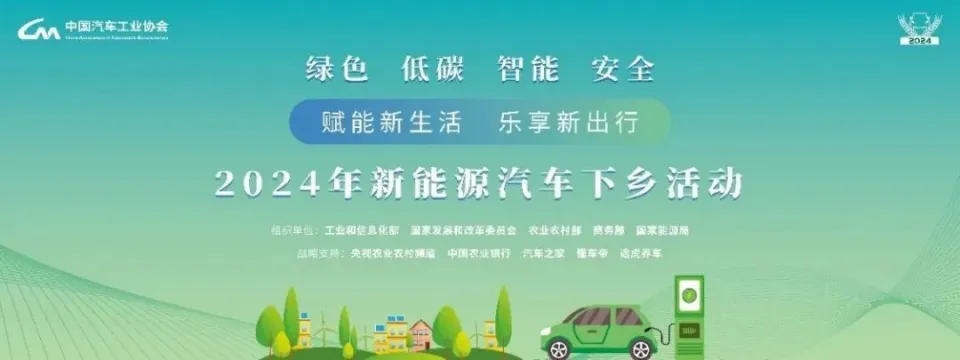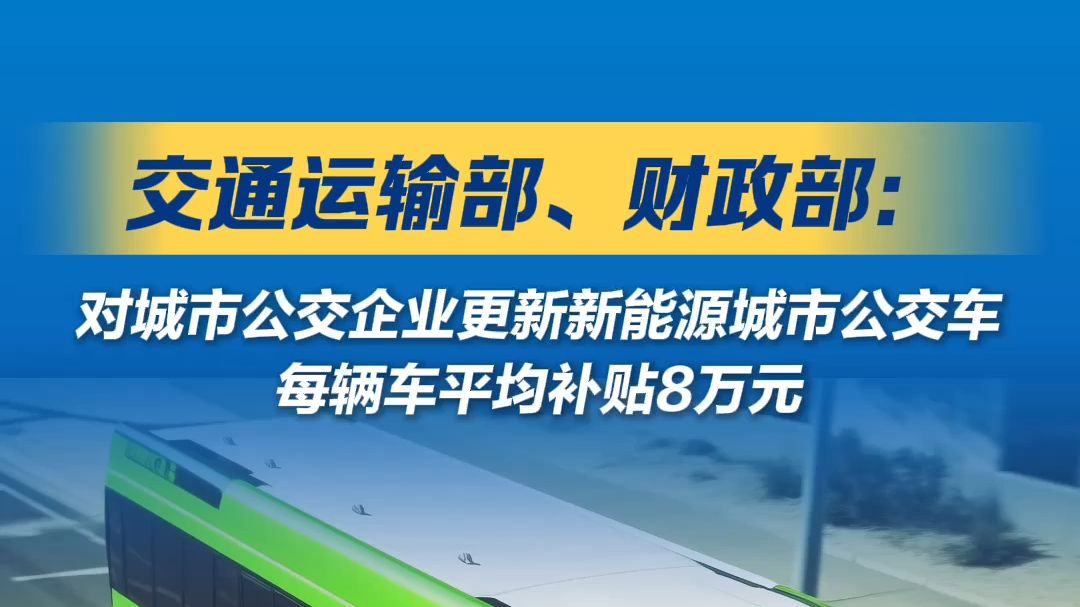五部门关于开展2024年江南网页版登录入口官网下载 下乡活动的通知
首个汽车信息安全ISO国际标准正式发布ISO-SAE 21434
首个汽车信息安全ISO国际标准正式发布ISO-SAE 21434本文来源:智车科技/ 导读 /2021年8月31日,ISO国际标准化组织正式发布了ISO/SAE 21434:Roa

本文来源:智车科技
/ 导读 /
2021年8月31日,ISO国际标准化组织正式发布了ISO/SAE 21434:Road vehicles-Cybersecurity engineering(道路车辆 信息安全工程)标准,该标准定义了针对所有车载电子系统、车辆部件、车载软件及外部网络的网络信息安全工程设计实践/做法。

标准发布

标准主要规定了道路车辆电子电气系统及其组件和接口在概念、开发、生产、运行、维护和销毁阶段工程相关的信息安全风险管理要求,标准主要侧重于汽车信息安全流程,并未规定与信息安全相关的具体技术或解决方案。作为当前汽车信息安全领域最重要的国际标准之一,其发布将为汽车全生命周期的信息安全过程管理及信息安全管理体系建设提供有力支撑。该标准制订工作自2016年1月30日启动,2021年8月发布。由中汽中心牵头组织行业专家正在推进将ISO/SAE 21434国际标准转化为推荐性国家标准《道路车辆 信息安全工程》。该标准文件由技术委员会ISO/TC 22、道路车辆、小组委员会SC 32、电气和电子部件及通用系统方面以及SAE TEVEES18A车辆信息安全系统工程委员会共同编制。ISO/SAE 21434第一版取消并替代SAE J3061:2016- Cybersecurity Guidebook for Cyber-Physical Vehicle Systems。

ISO/SAE 21434概述
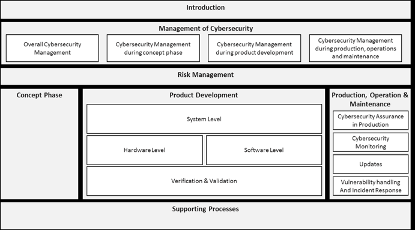
ISO/SAE 21434概览
ISO/SAE 21434侧重于汽车电子产品设计和开发中的网络安全风险。该标准涵盖网络安全治理和结构、车辆整个生命周期的安全工程以及后期生产安全流程。ISO/SAE 21434的前置ISO标准是ISO 26262“道路车辆-功能安全”。ISO 26262为汽车安全提供了一个生命周期(管理、开发、生产、经营、服务、报废)理念,并在这些生命周期阶段中提供必要的支持。该标准涵盖功能性安全方面的整体开发过程(包括需求规划、设计、实施、集成、验证、确认和配置)。26262不包括软件开发或车辆子系统,也不包括如何处理网络安全事件。ISO/SAE 21434涵盖了网络安全的各个方面——从车辆的初始设计到报废。供应链也包括在汽车生产的每个步骤中。ISO/SAE 21434涵盖了连接车辆生命周期的所有阶段,包括电气和电子系统,包括其部件和接口,包括:? 设计与工程? 生产? 客户操作? 维修保养? 报废这种网络安全管理的生命周期方法使ISO/SAE 21434成为连接车辆网络安全最全面的方法之一。

对汽车原始设备制造商和开发商的影响
任何制造商、开发人员或OEM都应考虑积极地将ISO/SAE 21434集成到其当前的生产过程中。新标准的主要关注点是网络信息安全。标准的重点是通过规范制造商测试其产品的方式,为汽车消费者提供更好的安全性。
ISO/SAE 21434要求制造商和开发商进行风险评估。在识别风险之前,厂商需要知道是什么导致了风险。评估将识别可能容易受到攻击的任何组件、API或软件功能。完成评估后,应识别漏洞。
对汽车开发商和制造商的影响是,他们可以生产在发布前经过测试的应用程序和组件,这有利于驾驶员和他们的安全。
标准也与其他框架一起工作:在ISO/SAE 21434的情况下,NIST SP-800—30和StAMARDISO/IEC 31010可用于使用尝试和测试的方法建立风险评估的基础。
ISO/SAE 21434标准由汽车利益相关者引入,以解决连接带来的安全问题。该标准为强化安全性提供了一个框架,促进使用更理想的方法构建更安全的车辆。

ISO/SAE 21434:2021标准简介
(一)标准一般信息
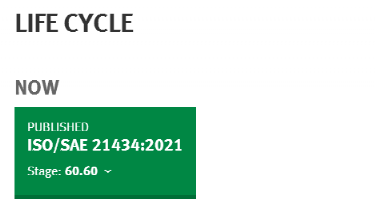
状态:已发布发布日期:2021-08版本:第1版页数:81页技术委员会:ISO/TC 22/SC 32 Electrical and electronic components and general system aspects(电气和电子元件及一般系统相关)
(二)标准的目的
本文件阐述了道路车辆电气和电子(E/E)系统工程中的信息安全观点。通过确保对信息安全的适当考虑,本文件旨在使电子/电子系统工程跟上最先进的技术和不断发展的攻击方法。
本文档提供了与信息安全工程相关的词汇、目标、要求和准则,作为整个供应链中共同理解的基础。这使组织能够:?定义信息安全政策和流程;?管理信息安全风险;?培养信息安全文化。本文件可用于实施信息安全管理系统,包括信息安全风险管理。
(三)本文件的组织
图1给出了标准文档结构的概述。图1的元素没有规定各个主题的执行顺序。标准文件概述
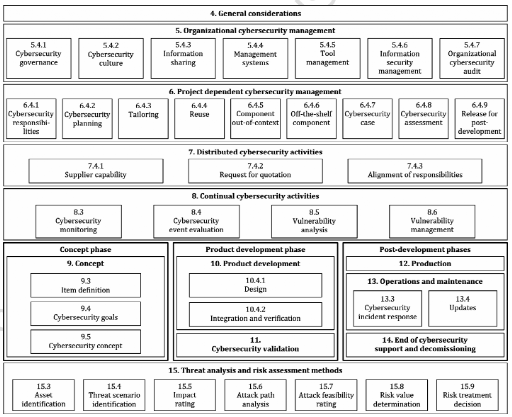
第4条(一般注意事项)仅供参考,包括本文件中道路车辆信息安全工程方法的背景和观点。
第5条(组织信息安全管理)包括组织信息安全政策、规则和流程的信息安全管理和规范。
第6条(项目相关信息安全管理)包括项目层面的信息安全管理和信息安全活动。
第7条(分布式信息安全活动)包括在客户和供应商之间分配信息安全活动责任的要求。
第8条(持续信息安全活动)包括为持续风险评估提供信息的活动,并定义了在信息安全支持结束前电子/电子系统的脆弱性管理(vulnerability management)。
第9条(概念)包括确定项目信息安全风险、信息安全目标和信息安全要求的活动。
第10条(产品开发)包括定义信息安全规范、实施和验证信息安全要求的活动。
第11条(信息安全验证)包括车辆级项目的信息安全验证。
第12条(生产)包括物品或组件制造和组装的信息安全相关方面。
第13条(操作和维护)包括与信息安全事件响应和项目或组件更新相关的活动。
第14条(结束信息安全支持及报废)包括结束项目或组件支持和报废的信息安全考虑因素。
第15条(威胁分析和风险评估方法)包括模块化的分析和评估方法,以确定信息安全风险的程度,从而采取措施。
第5条至第15条有自己的目标、规定(即要求、建议、许可)和工作成果(work products)。工作成果是满足一个或多个相关要求的信息安全活动的结果。
“先决条件”是由前一阶段的工作成果组成的强制性输入,“进一步支持信息”是指可以考虑的信息,可由有别于信息安全活动负责人的来源提供。
条款和工作成果被分配唯一标识符,由两个字母的缩写(“RQ”表示要求,“RC”表示建议,“PM”表示许可,“WP”表示工作成果)组成,后跟两个数字,用连字符分隔。第一个数字表示该条款,第二个数字分别表示该条款的条款或工作成果的连续顺序。例如,[RQ-05-14]指第5条中的第14条规定,这是一项要求。
(四)标准目录
标准目录 (参考译文)
Foreword 前言
Introduction 介绍
1 Scope 1范围
2 Normative references 2规范性引用文件
3 Terms, definitions and abbreviated terms 3术语、定义和缩略语
3.1 Terms and definitions 3.1术语和定义
3.2 Abbreviated terms 3.2缩略语
4 General considerations 4总体考虑
5 Organizational cybersecurity management 5组织信息安全管理
5.1 General 5.1通则
5.2 Objectives 5.2目标
5.3 Inputs 5.3输入
5.4 Requirements and recommendations 5.4要求和建议
5.5 Work products 5.5工作产品(成果)
6 Project dependent cybersecurity management 6项目相关信息安全管理
6.1 General 6.1通则
6.2 Objectives 6.2目标
6.3 Inputs 6.3输入
6.4 Requirements and recommendations 6.4要求和建议
6.5 Work products 6.5工作成果
7 Distributed cybersecurity activities 7.分布式信息安全活动
7.1 General 7.1通则
7.2 Objectives 7.2目标
7.3 Inputs 7.3输入
7.4 Requirements and recommendations 7.4要求和建议
7.5 Work products 7.5工作成果
8 Continual cybersecurity activities 8持续信息安全活动
8.1 General 8.1通则
8.2 Objectives 8.2目标
8.3 Cybersecurity monitoring 8.3信息安全监控
8.4 Cybersecurity event evaluation 8.4信息安全事件评估
8.5 Vulnerability analysis 8.5漏洞分析
8.6 Vulnerability management 8.6漏洞管理
9 Concept 9概念
9.1 General 9.1通则
9.2 Objectives 9.2目标
9.3 Item definition 9.3项目定义
9.4 Cybersecurity goals 9.4信息安全目标
9.5 Cybersecurity concept 9.5信息安全概念
10 Product development 10 产品开发
10.1 General 10.1通则
10.2 Objectives 10.2目标
10.3 Inputs 10.3输入
10.4 Requirements and recommendations 10.4要求和建议
10.5 Work products 10.5工作产品
11 Cybersecurity validation 11信息安全验证
11.1 General 11.1通则
11.2 Objectives 11.2目标
11.3 Inputs 11.3输入
11.4 Requirements and recommendations 11.4要求和建议
11.5 Work products 11.5工作产品
12 Production 12生产
12.1 General 12.1通则
12.2 Objectives 12.2目标
12.3 Inputs 12.3输入
12.4 Requirements and recommendations 12.4要求和建议
12.5 Work products 12.5工作产品
13 Operations and maintenance 13运行和维护
13.1 General 13.1通则
13.2 Objectives 13.2目标
13.3 Cybersecurity incident response 13.3信息安全事件响应
13.4 Updates 13.4更新
14 End of cybersecurity support and decommissioning 14信息安全支持结束和报废
14.1 General 14.1通则
14.2 Objectives 14.2目标
14.3 End of cybersecurity support 14.3信息安全支持结束
14.4 Decommissioning 14.4报废
15 Threat analysis and risk assessment methods 15威胁分析和风险评估方法
15.1 General 15.1通则
15.2 Objectives 15.2目标
15.3 Asset identification 15.3资产识别
15.4 Threat scenario identification 15.4威胁场景识别
15.5 Impact rating 15.5影响等级
15.6 Attack path analysis 15.6攻击路径分析
15.7 Attack feasibility rating 15.7攻击可行性等级
15.8 Risk value determination 15.8风险值确定
15.9 Risk treatment decision 15.9风险处理决策
Annex A Summary of cybersecurity activities and work products 附录A 信息安全活动和工作成果概述
A.1 General A.1概述
A.2 Overview of cybersecurity activities and work products A.2信息安全活动和工作成果概述
Annex B Examples of cybersecurity culture 附录B 信息安全文化示例
Annex C Example of cybersecurity interface agreement template 附录C 信息安全接口协议模板示例
C.1 General C.1概述
C.2 Example template C.2示例模板附录
Annex D Cybersecurity relevance – example methods and criteria 附件D 信息安全相关性-示例方法和标准
D.1 General D.1总则
D.2 Methods D.2方法
Annex E Cybersecurity assurance levels 附件E 网络安全保证分级
E.1 General E.1总则
E.2 Determining a CAL E.2确定CAL
E.3 Using a CAL E.3使用CAL
Annex F Guidelines for impact rating 附件F 影响评级指南
F.1 General F.1总则
F.2 Impact rating for safety damage F.2安全损伤的冲击等级
F.3 Impact rating for financial damage F.3财务损失的影响评级
F.4 Impact rating for operational damage F.4操作损伤的冲击等级
F.5 Impact rating for privacy damage F.5隐私损害的影响评级附录
Annex G Guidelines for attack feasibility rating G 攻击可行性评级指南
G.1 General G.1概述
G.2 Guidelines for the attack potential-based approach G.2基于攻击潜力的方法指南
G.3 Guidelines for the CVSS-based approach G.3基于CVSS的方法指南
G.4 Guidelines for the attack vector-based approach G.4基于攻击向量的方法指南
Annex H Examples of application of TARA methods – headlamp system 附录H TARA方法应用示例-前照灯系统
H.1 General H.1通则
H.2 Example activities for concept phase of a headlamp system H.2前照灯系统概念阶段的活动示例
BIBLIOGRAPHY 参考文献
(五)图目录
图目录 (参考译文)
Figure 1 — Overview of this document 图1-本文件概述
Figure 2 — Overall cybersecurity risk management 图2-总体信息安全风险管理
Figure 3 — Relationship between item, function, component and related terms 图3-事项、功能、组件和相关术语之间关系
Figure 4 — Cybersecurity governance 图4-信息安全治理
Figure 5 — Integration of off-the-shelf and out-of-context components 图5-现有组件和非关联组件的集成
Figure 6 — Reuse analysis examples 图6-重用分析示例
Figure 7 — Cybersecurity assessment in relation to other cybersecurity activities 图7-与其他信息安全活动相关的信息安全评估
Figure 8 — Use cases for customer/supplier relationships in the supply chain 图8-供应链中客户/供应商关系的用例
Figure 9 — Example of product development activities in the V-model 图9-V型模型中的产品开发活动示例
Figure C.1 — Example of a cybersecurity interface agreement template 图C.1-信息安全接口协议模板示例
Figure D.1 — Cybersecurity relevance example method and criteria 图D.1-信息安全相关性示例方法和标准
Figure E.1 — Relationship between a CAL and risk 图E.1-CAL和风险之间的关系
Figure H.1 — Interactions in concept phase 图H.1-概念阶段的交互
Figure H.2 — Example of item boundary and preliminary architecture of the headlamp system 图H.2-项目边界和初步架构-前照灯系统
(六)表目录
表目录 (参考译文)
Table G.1 — Elapsed time G.1-经过时间
Table G.2 — Specialist expertise G.2-专家专业知识
Table G.3 — Knowledge of the item or component G.3-项目或组件知识
Table G.4 — Window of opportunity G.4-机会窗口
Table G.5 — Equipment G.5-设备
Table G.6 — Example aggregation of attack potential G.6-潜在攻击聚合示例
Table G.7 — Example attack potential mapping G.7-潜在攻击映射示例
Table G.8 — Example CVSS exploitability mapping G.8-CVSS可利用性映射示例
Table G.9 — Attack vector-based approach G.9-基于攻击向量的方法
Table H.1 — Example description of the operational environment H.1-操作环境的示例说明
Table H.2 — Example list of assets and damage scenarios H.2-资产和损害场景的示例列表
Table H.3 — Example of impact ratings for damage scenarios H.3-损害场景的影响评级示例
Table H.4 — Example threat scenarios H.4-威胁场景示例
Table H.5 — Example attack paths for threat scenarios H.5-威胁场景的攻击路径示例
Table H.6 — Examples of attack feasibility rating with the attack vector-based approach H.6-基于攻击向量方法的攻击可行性示例评级
Table H.7 — Examples of attack feasibility rating with the attack potential-based approach H.7-基于攻击潜力方法的攻击可行性评级示例
Table H.8 — Risk matrix example H.8-风险矩阵示例
Table H.9 — Examples of determined risk values H.9-确定的风险值示例
Table H.10 — Example translation of impact and attack feasibility to numerical values H.10-影响和攻击可行性转换为数值的示例
(七)部分标准内容(译文仅供参考):
1.范围本文件规定了有关道路车辆电气和电子(E/E:electrical and electronic)系统(包括其部件和接口)的概念、产品开发、生产、操作、维护和报废的信息安全风险管理(cybersecurity risk management)工程要求。
定义了一个框架,其中包括信息安全流程的要求以及沟通和管理信息安全风险的通用语言。
本文件适用于在本文件出版后开始开发或修改的系列生产道路车辆E/E系统,包括其部件和接口。
本文件未规定与信息安全相关的具体技术或解决方案。
2.规范性引用文件?ISO 26262-3:2018,Road vehicles — Functional safety — Part 3: Concept phase(道路车辆-功能安全-第3部分:概念阶段)
3.术语、定义和缩写术语/Terms, definitions and abbreviated terms
3.1术语和定义在本文件中,适用以下术语和定义。
3.1.1
architectural design
representation that allows for identification of components (3.1.7), their boundaries, interfaces and interactions
3.1.2
asset
object that has value, or contributes to value
Note 1 to entry: An asset has one or more cybersecurity properties (3.1.20) whose compromise can lead to one or more damage scenarios (3.1.22).
3.1.3
attack feasibility
attribute of an attack path (3.1.4) describing the ease of successfully carrying out the corresponding set of actions
3.1.4
attack path
attack
set of deliberate actions to realize a threat scenario (3.1.33)
3.1.5
attacker
person, group, or organization that carries out an attack path (3.1.4)
3.1.6
audit
examination of a process to determine the extent to which the process objectives are achieved
[SOURCE: ISO 26262-1:2018 [1], 3.5, modified — The phrase “with regard to” was substituted by "to determine the extent to which" and "are achieved" was added.]
3.1.7
component
part that is logically and technically separable
3.1.8
customer
person or organization that receives a service or product
[SOURCE: ISO 9000:2015 [2], 3.2.4, modified — The phrase “could or does receive” was replaced by “receives”, the phrase “that is intended for or required by this person or organization” was omitted, and the example and note 1 to entry were omitted.]
3.1.9
cybersecurity
road vehicle cybersecurity
condition in which assets (3.1.2) are sufficiently protected against threat scenarios (3.1.33) to items (3.1.25) of road vehicles, their functions and their electrical or electronic components (3.1.7)
Note 1 to entry: In this document, for the sake of brevity, the term cybersecurity is used instead of road vehicle cybersecurity.
3.1.10
cybersecurity assessment
judgement of cybersecurity (3.1.9)
3.1.11
cybersecurity case
structured argument supported by evidence to state that risks (3.1.29) are not unreasonable
3.1.12
cybersecurity claim
statement about a risk (3.1.29)
Note 1 to entry: The cybersecurity claim can include a justification for retaining or sharing the risk.
3.1.13
cybersecurity concept
cybersecurity requirements of the item (3.1.25) and requirements on the operational environment (3.1.26), with associated information on cybersecurity controls (3.1.14)
3.1.14
cybersecurity control
measure that is modifying risk (3.1.29)
[SOURCE: ISO 31000:2018 [3], 3.8, modified — The word "cybersecurity" was added to the term, the phrase “maintains and/or” was deleted, the notes to entry were deleted.]
3.1.15
cybersecurity event
cybersecurity information (3.1.18) that is relevant for an item (3.1.25) or component (3.1.7)
3.1.16
cybersecurity goal
concept-level cybersecurity requirement associated with one or more threat scenarios (3.1.33)
3.1.17
cybersecurity incident
situation in the field that can involve vulnerability (3.1.38) exploitation
3.1.18
cybersecurity information
information with regard to cybersecurity (3.1.9) for which relevance is not yet determined
3.1.19
cybersecurity interface agreement
agreement between customer (3.1.8) and supplier concerning distributed cybersecurity activities (3.1.23)
3.1.20
cybersecurity property
attribute that can be worth protecting
Note 1 to entry: Attributes include confidentiality, integrity and/or availability.
3.1.21
cybersecurity specification
cybersecurity requirements and corresponding architectural design (3.1.1)
3.1.22
damage scenario
adverse consequence involving a vehicle or vehicle function and affecting a road user (3.1.31)
3.1.23
distributed cybersecurity activities
cybersecurity activities for the item (3.1.25) or component (3.1.7) whose responsibilities are distributed between customer (3.1.8)and supplier
3.1.24
impact
estimate of magnitude of damage or physical harm from a damage scenario (3.1.22)
3.1.25
item
component or set of components (3.1.7) that implements a function at the vehicle level
Note 1 to entry: A system can be an item if it implements a function at the vehicle level, otherwise it is a component.
[SOURCE: ISO 26262-1:2018 [1], 3.8, modified — The term “system” has been replaced by “component”, the phrases “to which ISO 26262 is applied” and “or part of a function” have been omitted and the Note 1 to entry has been replaced.]
3.1.26
operational environment
context considering interactions in operational use
Note 1 to entry: Operational use of an item (3.1.25) or a component (3.1.7) can include use in a vehicle function, in production, and/or in service and repair.
3.1.27
out-of-context
not developed in the context of a specific item (3.1.25)
EXAMPLE:
Processing unit with assumed cybersecurity requirements to be integrated in different items.
3.1.28
penetration testing
cybersecurity testing in which real-world attacks are mimicked to identify ways to compromise cybersecurity goals (3.1.16)
3.1.29
risk
cybersecurity risk
effect of uncertainty on road vehicle cybersecurity (3.1.9) expressed in terms of attack feasibility (3.1.3) and impact (3.1.24)
3.1.30
risk management
coordinated activities to direct and control an organization with regard to risk (3.1.29)
[SOURCE: ISO 31000:2018 [3], 3.2]
3.1.31
road user
person who uses a road
EXAMPLE:
Passenger, pedestrian, cyclist, motorist, or vehicle owner.
3.1.32
tailor,verb
to omit or perform an activity in a different manner compared to its description in this document
3.1.33
threat scenario
potential cause of compromise of cybersecurity properties (3.1.20) of one or more assets (3.1.2) in order to realize a damage scenario (3.1.22)
3.1.34
triage
analysis to determine the relevance of cybersecurity information (3.1.18) to an item (3.1.25) or component (3.1.7)
3.1.35
trigger
criterion for triage (3.1.34)
3.1.36
validation
/confirm/iation, through the provision of objective evidence, that the cybersecurity goals (3.1.16) of the item (3.1.25) are adequate and are achieved
[SOURCE: ISO/IEC/IEEE 15288:2015 [4], 4.1.53, modified — The phrase “requirements for a specific intended use or application have been fulfilled” has been replaced by “cybersecurity goals of the item are adequate and are achieved”, note 1 to entry has been omitted.]
3.1.37
verification
/confirm/iation, through the provision of objective evidence, that specified requirements have been fulfilled
[SOURCE: ISO/IEC/IEEE 15288:2015 [4], 4.1.54, modified — The note 1 to entry has been omitted.]
3.1.38
vulnerability
weakness (3.1.40) that can be exploited as part of an attack path (3.1.4)
[SOURCE: ISO/IEC 27000:2018 [5], 3.77, modified — The phrase “of an asset or control” has been omitted; the phrase “by one or more threats” has been replaced by “as part of an attack path”.]
3.1.39
vulnerability analysis
systematic identification and evaluation of vulnerabilities (3.1.38)
3.1.40
weakness
defect or characteristic that can lead to undesirable behaviour
EXAMPLE 1:Missing requirement or specification.
EXAMPLE 2:Architectural or design flaw, including incorrect design of a security protocol.
EXAMPLE 3:Implementation weakness, including hardware and software defect, incorrect implementation of a security protocol.
EXAMPLE 4:Flaw in the operational process or procedure, including misuse and inadequate user training.
EXAMPLE 5:Use of an outdated or deprecated function, including cryptographic algorithms.
3.2缩略语
缩略语 标准原文英文 仅供参考
CAL cybersecurity assurance level 信息安全保障级别
CVSS common vulnerability scoring system 通用脆弱性评分系统
E/E electrical and electronic 电气和电子
ECU electronic control unit 电子控制单元
OBD on-board diagnostic 车载诊断
OEM original equipment manufacturer 原始设备制造商
PM permission 许可
RC recommendation 推荐
RQ requirement 要求
RASIC responsible, accountable, supporting, informed, consulted 责任、负责、支持、知情、咨询
TARA threat analysis and risk assessment 威胁分析和风险评估
WP work product 工作成果
- End -
-
燃油汽车、燃气汽车等排放标准更严格2023-11-30
-
日媒:中日有望统一纯电动车快速充电标准2023-11-30
-
环境部尹航:重型车排放标准实施进展与未来动向2021-09-07
-
达不到整车出厂品质标准!坦克游侠下线后交付再延迟2021-09-06
-
首批特斯拉Model Y标准续航版广深陆续交付2021-08-29
-
工信部:将适时开展钠离子电池标准制定,引导产业高质量发展;京津冀燃料电池汽车示范城市群获批;石家庄廊坊将建全国性邮政快递枢纽2021-08-27
-
27.6万元!首批特斯拉ModelY标准续航版在北京交付2021-08-26
-
特斯拉:首批 Model Y 标准续航版今日交付2021-08-26
-
蔚来自动辅助驾驶致死!李想重新定义标准 周鸿祎表态2021-08-17
-
李想呼吁统一自动驾驶中文名词标准2021-08-17
-
李想:统一自动驾驶中文名词标准,避免误解2021-08-17
-
换电重卡电池标准将统一?2021-08-15
-
交付期延长 国产Model Y标准续航版需6-10周交付2021-08-15
-
比亚迪汉 EV 新增标准续航版豪华型:续航里程 506km2021-08-03
-
降价1.5万 特斯拉Model 3标准续航升级版售23.59万元2021-08-02
